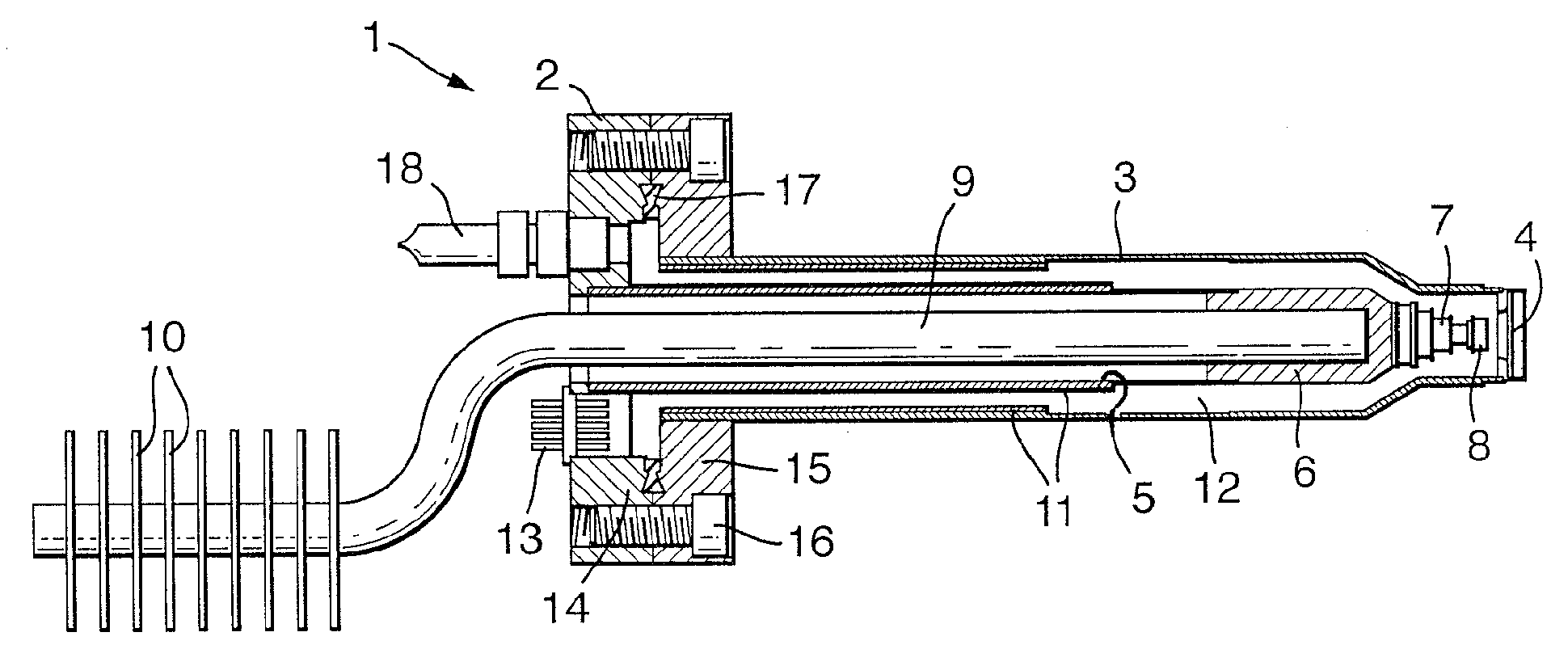X-ray detector and method
a detector and detector technology, applied in the field of x-ray detectors, can solve the problems of reducing the size of the detector envelope, reducing the detection efficiency of the detector, so as to prevent outgassing
- Summary
- Abstract
- Description
- Claims
- Application Information
AI Technical Summary
Benefits of technology
Problems solved by technology
Method used
Image
Examples
Embodiment Construction
[0042] A first example of an x-ray detector 1 according to the invention is shown in FIG. 2, which is a view partly in section. The detector 1 has a body 2 to which is coupled an elongate cylindrical outer tube 3. At one end of the tube 3, distal from the body 2, an x-ray window 4 is provided, this window being capable of withstanding a pressure differential across its surface, for example an external pressure of about 1 bar on one side and less than 1×10−3 mbar on the other. The window is substantially transparent to x-rays. Within the elongate tube 3 a second, inner tube 5 is located, this being of reduced diameter (defining a space there between) and located coaxially with respect to the outer tube. The inner tube 5 terminates within the outer tube and is terminated by an end piece 6 which seals the inner environment within the outer tube (that is, the space between the outer and inner tubes), from the inner environment within the inner tube 5. Each of the tubes 3,5 may be fabric...
PUM
 Login to View More
Login to View More Abstract
Description
Claims
Application Information
 Login to View More
Login to View More - R&D
- Intellectual Property
- Life Sciences
- Materials
- Tech Scout
- Unparalleled Data Quality
- Higher Quality Content
- 60% Fewer Hallucinations
Browse by: Latest US Patents, China's latest patents, Technical Efficacy Thesaurus, Application Domain, Technology Topic, Popular Technical Reports.
© 2025 PatSnap. All rights reserved.Legal|Privacy policy|Modern Slavery Act Transparency Statement|Sitemap|About US| Contact US: help@patsnap.com



